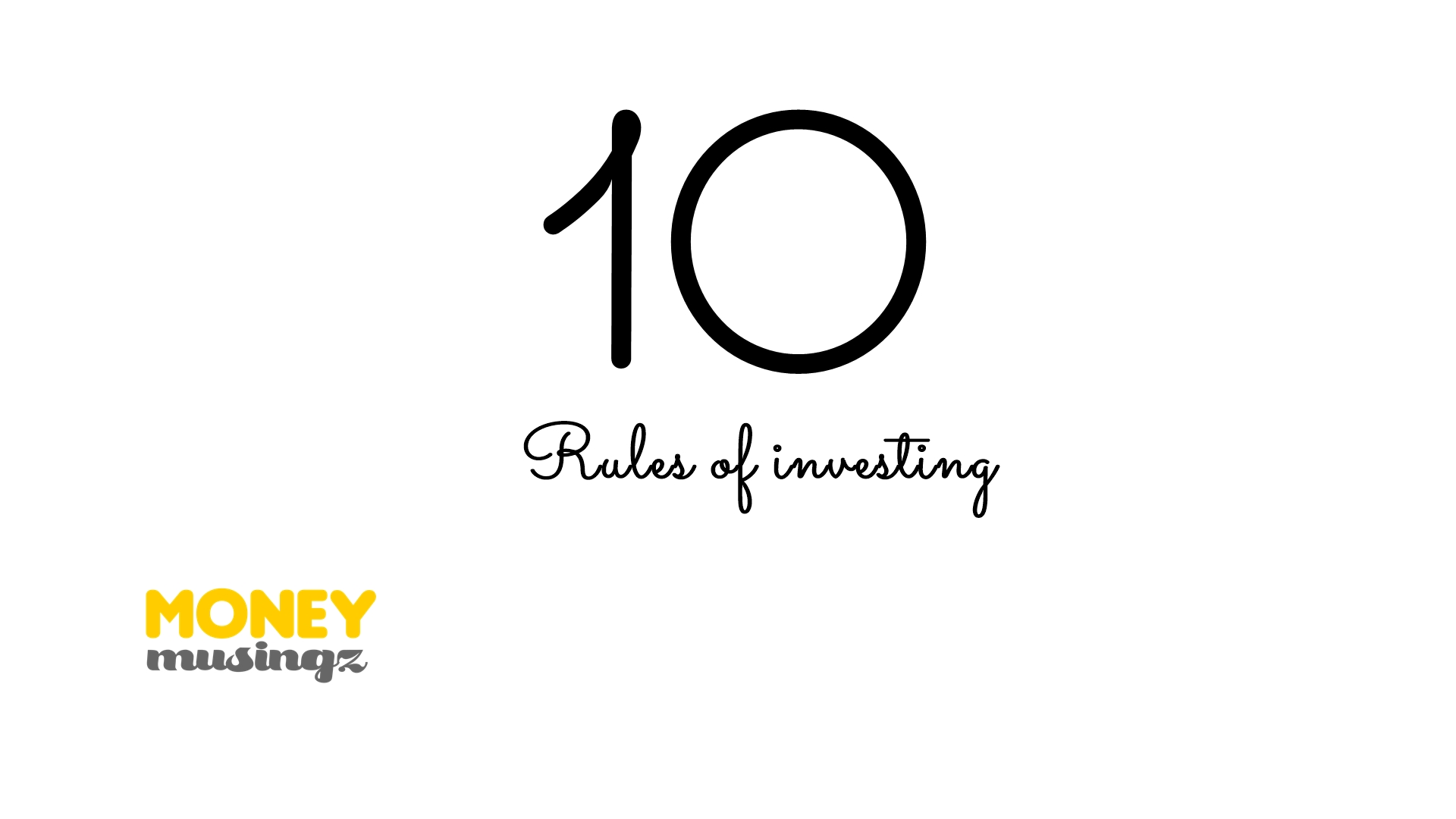Bob Farrell is a market veteran of over five decades and did study fundamental analysis under Gramm and Dodd, Warren Buffett’s teachers, but eventually became a trader. Here are the 10 rules of investing that Bob advocated…..
Markets tend to return to the mean over time
Profit margin is the most mean reverting series in finance. Stock prices have an added layer of investor’s greed and fear. Eventually stock price mean revert to earning trends and valuations.
Excesses in one direction will lead to an opposite excess in the other direction
When markets move in a single direction beyond logical explanations, the reversion is often magnified. That’s why booms are followed by busts. Slow moving markets seldom lead to boom-busts dynamics. It’s not only that booms are followed by busts, they may actually cause one.
There are no new eras — excesses are never permanent
“This time it’s different” – is one of the most dangerous and often repeated sentences in stock markets. But investment returns are cyclical and new eras seldom last. Every new era has trapped the investors’ imagination – leading to losses and sometimes permanent loss of capital.
Exponential rapidly rising or falling markets usually go further than you think, but they do not correct by going sideways
Sideways consolidation is a myth after a large rally in stock prices. More often than not – parabolic rise are worked off by deep falls and crashes. Don’t be blindsided by consolidation as a proxy for correction.
The public buys the most at the top and the least at the bottom
When investing becomes a popularity contest, it often leads to ugly outcomes. Most fashionable and over owned stocks don’t deliver what they promise. Interestingly at market bottoms, the investors’ greed turns to despair and capital protection replaces returns expectation. That is the time to put cash to work.
Fear and greed are stronger than long-term resolve
Over a long-term horizon, that is 10 years or longer, stock markets often give handsome returns. Usually most investors are always bullish on markets. But in reality very few people have the resolve to stick to their philosophy and enjoy the fruits of patience. That’s because fear and greed are inherently more powerful emotions. Impulsive behaviour effects stock market investments.
Markets are strongest when they are broad and weakest when they narrow to a handful of blue-chip names
When stock indices rise based on a few select blue-chip names while the broader market falls, it is a sign of distribution. It usually leads to corrections, downtrend and crashes. Same is true for markets selling off on a select few stocks.
Bear markets have three stages — sharp down, reflexive rebound and a drawn-out fundamental downtrend
Bear markets generally end with despair when no recovery is in sight and stocks fall to dirt cheap valuations. The reflexive rebound is what traps most investors.
When all the experts and forecasts agree — something else is going to happen
When the last person to buy has bought, there are no new investors left. So usually stock prices peak when the earnings are best possible, conditions are favourable and everyone believe they would remain so. Ironically the point of maximum risk is generally perceived to be least risky.
Bull markets are more fun than bear markets
Since buying stocks and holding them for long-term is what delivers long-term wealth creation, meanwhile bear markets are uncomfortable. The accompanied volatility during bear markets make them stressful but ripe with opportunities. You are bound to make mistakes when you are having too much fun at the cost of being more attentive.
Like all rules on Dalal Street, Bob Farrell’s 10 rules are not intended to be considered hard and fast or set in stone. There are exceptions to every rule. Nevertheless, these rules will benefit you as a trader or as an investor by helping you to look beyond the latest news headlines or your gut emotions. Being aware of sentiment can prevent traders from selling near the bottom and buying near the top, which often goes against our natural instincts. Human nature causes individual investors and traders to often feel most confident at the top of a market. At the same time, they often feel most pessimistic or cautious at market bottoms. Awareness of these emotions and their potential consequences is the first step towards conquering their adverse effects.


